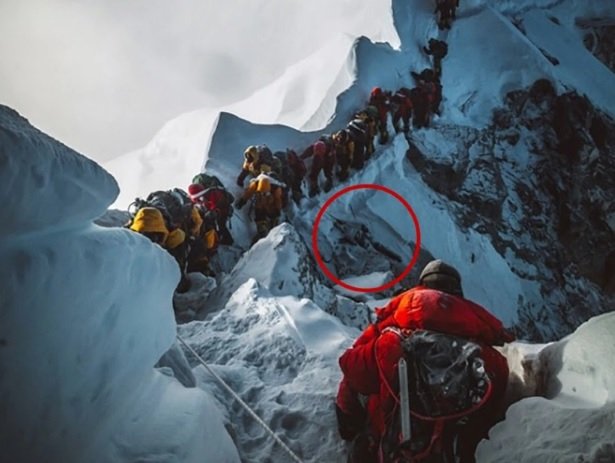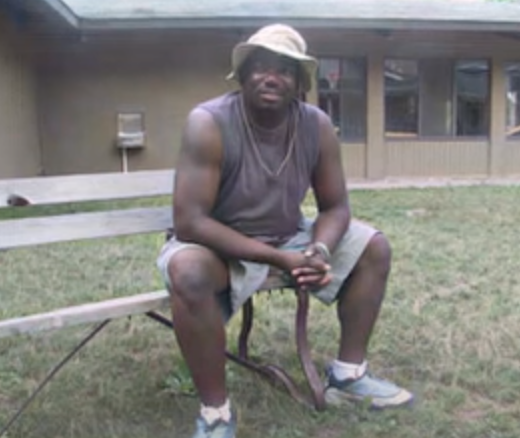The Death of Hannelore Schmatz: The First Woman to Die on Mount Everest
The frozen body of Hannelore Schmatz sits alongside the trail where many brave mountaineers climb to reach the top of Everest. Photo: ThoughtNova
In 1979 Hannelore Schmatz and her husband attempted to climb Mount Everest. They succeeded in their attempt but Hannelore failed to survive the descent. Her body is still on the mountain to this day.
Who was Hannelore Schmatz?
Hannelore Schmatz before her untimely death
Hannelore Schmatz was a German climber who was born on February 16th, 1940. She had a lot of successful climbs under her belt and when she was 39, she decided to tackle the biggest challenge of all: Mount Everest.
Her husband Gerhard Schmatz, was leading the climb . He was the oldest man to have successfully made the climb at the time. They had a team of Sherpas, guides, and an American climber named Rey Genet with them.
Climbing Everest is a big deal and people have been trying to do it for over a hundred years. It takes a lot of time to get used to the high altitude and dangerous terrain, and it's dangerously cold up there.
The highest camp is called the Death Zone because the air is so thin that your body slowly shuts down over a few days. It's not safe to stay there for very long.
Since 1922, more than 8,400 people have tried to climb Everest. Almost 300 of them have gotten into life threatening situations, and many of them have died trying.
Most of the deaths happened in the Death Zone, where climbers were killed by things like avalanches, rockfall, falls, exposure to the cold, exhaustion, and altitude sickness.
Hannelore Schmatz’s Everest Climb
In October 1979, Gerhard Schmatz led a 13-member expedition that lasted several months, slowly ascending to adjust to the altitude. While difficult, the climb was relatively uneventful, and they successfully made it to the summit.
The Death Zone starts at 26,000 feet, and Mount Everest's highest camp is located at 26,300 feet. Oxygen levels are only one-third of those at sea level.
No one can survive in the Death Zone for more than 48 hours, making Hannelore Schmatz's expedition's goal to get in, summit, and get back as quickly as possible. Even rescue attempts are unlikely to succeed in the death zone.
Hannelore and her husband were experienced climbers, but the journey proved perilous, and while they successfully reached the summit, it pushed them to their limits.
Once they reached the highest base camp, they began preparing for their return journey with their group of 8 climbers and 5 Sherpas. Most of the expedition made it safely back, but unfortunately, Hannelore Schmatz did not.
The Death of Hannelore Schmatz
Hannelore Schmatz and Rey Genet were exhausted during the descent, even though their climb had gone relatively smoothly. The guides had warned them not to spend the night in the Death Zone, but they set up a bivouac camp with one Sherpa.
Unfortunately, a severe snowstorm hit during the night and proved to be too much for Genet. He died from hypothermia before morning.
Despite surviving the night and continuing down the mountain with the Sherpa companion, Hannelore Schmatz was unable to travel far due to exhaustion resulting from staying in the Death Zone for an extended period of time.
When she reached an altitude of 27,200 feet, she had to rest against her backpack and ended up falling asleep and never waking up. Her Sherpa companion stayed with her body and suffered severe frostbite, losing most of his fingers and toes. According to him, her final words were "water, water."
Hannelore's death was caused by exposure and exhaustion resulting from her prolonged stay in the Death Zone, which is located at the highest Camp IV on one of the primary trekking routes. Lack of oxygen in this region can lead to poor coordination, incoherence, and confusion, even for experienced climbers like Hannelore, who may make poor decisions under these conditions.
Hannelore Schmatz was 39 years old when she died on Mount Everest, becoming the first woman to perish on the mountain. Her tragic fate serves as a reminder that experience alone may not be enough to survive the dangers of Mount Everest.
Attempts to recover the body of Hannelore Schmatz
Following her tragic death in 1979, Hannelore Schmatz's body remained on the mountain for several years, serving as a somber landmark for trekkers on the route to the peak.
Her body was in a sitting position, leaning back against her backpack, with her eyes open and her hair blowing in the wind.
The harsh weather conditions, including strong winds and freezing temperatures, caused Hannelore's body to become mummified and freeze in place, making it extremely challenging to retrieve her remains.
The rescuers would have had to hack her body out of the ice, which would have been a difficult task. Also, due to the freezing, her body may have doubled in weight, further adding to the challenge of removing her from the mountain.
In 1984, a recovery mission was undertaken by a Sherpa and a Nepalese police inspector to retrieve Hannelore Schmatz's body, but tragically both of them died in a fall during the trek. It was eventually decided that perhaps Schmatz's body should be left where it was. Eventually it was blown off the mountainside by strong winds.
As of now, there are around 200 to 250 bodies still remaining on Mount Everest, either frozen solid along the climbing routes or buried in the snow and ice of glaciers and snowfields.
This is the fate of many climbers who perish due to avalanches or falling from a height. The majority of these bodies remain buried in the ice of the glaciers that flow down from Mount Everest, and they will not be able to be recovered until the ice moves downstream to lower parts of the glacier.
If you were interested in the story of Hannelore Schmatz you might also like to read about the ghost ship Jenny or the disappearance of Vladimir Bastl.































